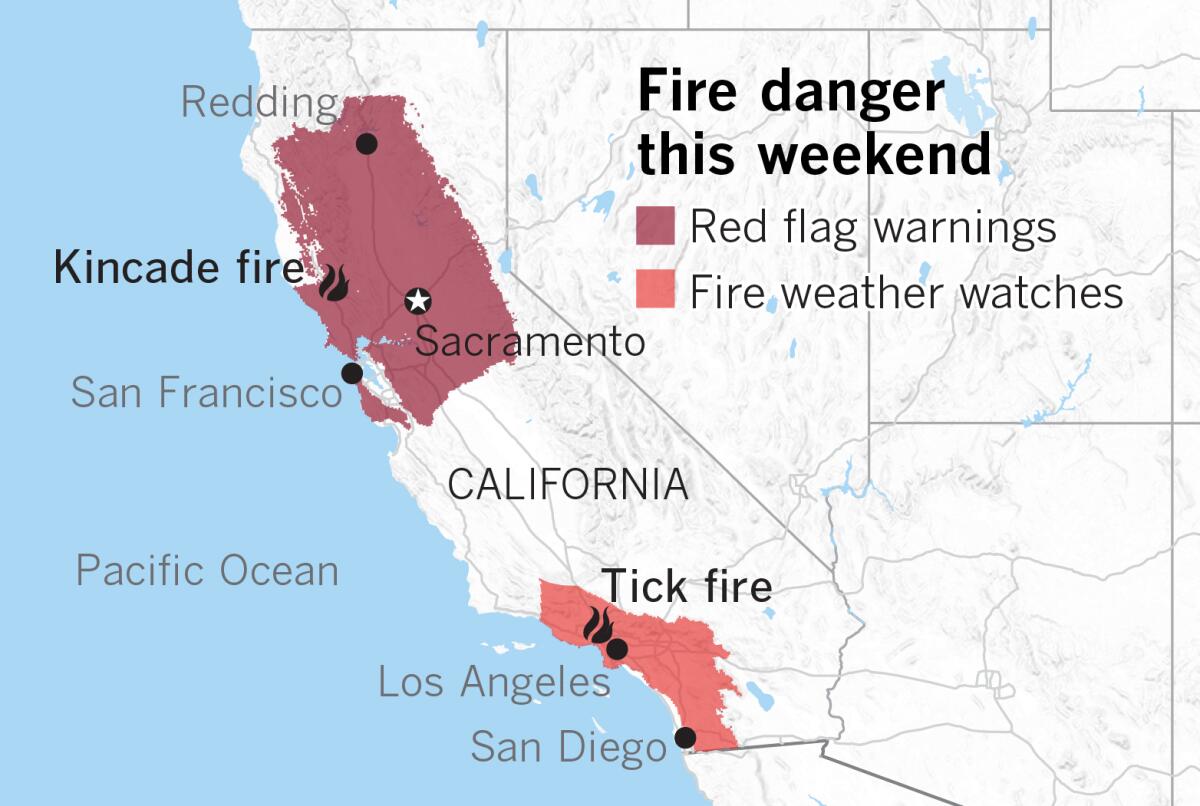Here is how to survive a power outage in your home

- Share via
More than 2 million residents in California could lose power this weekend as Pacific Gas & Electric Co. and Southern California Edison shut down parts of the electrical grid in an effort to prevent brush fires amid heavy winds. But a lack of power can lead to frantic moments when the time to evacuate comes.
Here is what you need to know:
Keep track of outages
— Where PG&E may shut off power this weekend
— Where Southern California Edison may shut off power this weekend
Before an outage
Have a plan
The American Red Cross recommends creating an evacuation plan for your home and having an emergency preparedness kit for any situation — including unexpected power outages. Your kit should include:
- A gallon of water per day per person
- Enough food for two weeks
- A flashlight
- A hand crank- or battery-powered radio
- A first aid kit
- Emergency contact information
- A map of your area
Extra cash will come in handy too, because credit card processing equipment and ATMs won’t function during a power outage, said Cynthia Shaw, a Red Cross spokeswoman.
Residents also should know how to manually open garage doors so they can quickly exit their home if necessary, she said. Street lights won’t be working, so be aware of potential delays because of dark roads.
Keep coolers and ice on hand
Inexpensive foam coolers will help keep food from spoiling during an outage. Surround perishables with ice in a cooler or the refrigerator to help food stay cold longer.
Fill up your gas tank
Have at least half a tank of gas in your car, and if you can, fill extra containers with gas. Without power, gas stations will have limited service and supplies.
During an outage
Turn off and unplug electronics
Turn off all unnecessary electronics. Appliances and other electronics that were in use when the power went out should be disconnected. Surges in power after the electricity is turned back on can damage your equipment. (The Red Cross suggests leaving one light on so you know when the power returns.)
You also can purchase a generator to power critical equipment, but make sure you know how to use it safely.
Don’t use candles
Using candles during a power outage may be tempting, but they are a fire hazard, Shaw said.
“People could tip the candles and start a fire in their homes,” she said. “With the winds, that fire could spread to multiple homes very quickly.”
Instead, carry flashlights and make sure you have extra batteries.
Keep your refrigerator doors closed
Without power, an unopened refrigerator can keep food cold for up to four hours, according to the Red Cross. A full freezer can keep its temperature for 48 hours, if the door stays closed.
Perishable food kept at 40 degrees Fahrenheit or lower is safe to eat.
If possible, keep food in a dry, cool spot.
After an outage
Throw away bad food
Perishables that were exposed to temperatures higher than 40 degrees for two or more hours should be thrown out, especially meat, fish, eggs and leftovers. Using a thermometer to determine whether food is safe is recommended.
According to the Red Cross, if your freezer food is colder than 40 degrees and has ice crystals on it, you can refreeze it.
Stay away from downed power lines
Winds can cause power lines to fall or become damaged by trees, Shaw said. If power lines are down, stay away and report them to your utility.
More to Read
Sign up for Essential California
The most important California stories and recommendations in your inbox every morning.
You may occasionally receive promotional content from the Los Angeles Times.











